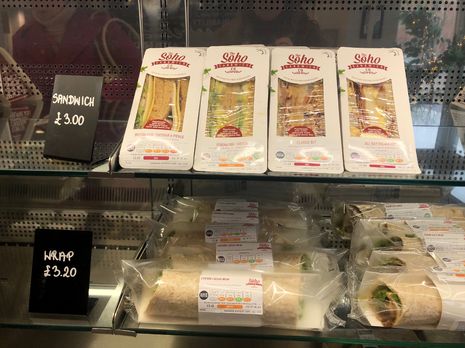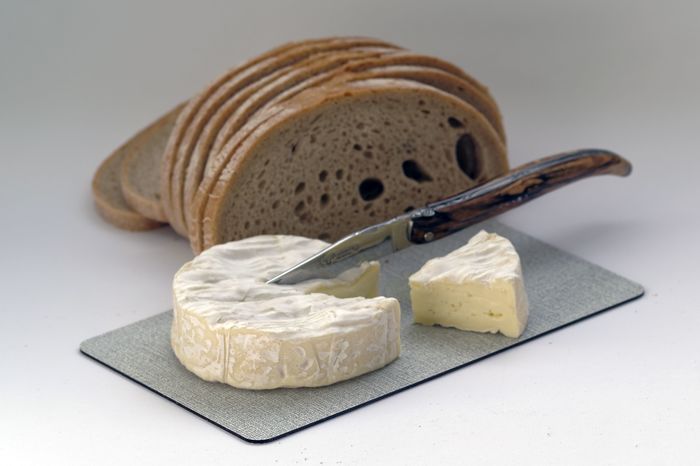Ultra-processed food: is it as bad as they say?
Maya Kunchur explores the effect of ultra-processed foods on your body and asks why they’re still around

Recently, you might have seen the phrase ‘ultra-processed food’ splashed across newspapers and branded as public enemy number one. What does the term actually mean, and as students do we really have to ditch the instant ramen?
‘Ultra-processed food’ refers to foods which are industrially prepared and consist mostly of ingredients not typically found in a kitchen: those which are derived from food constituents or lab synthesised, such as high fructose corn syrup. They typically contain lots of additives, emulsifiers and sweeteners and are generally higher in saturated fats, salt and sugar than their less processed counterparts. The term comes from the NOVA classification system, and is the last of 4 categories: unprocessed foods, processed ingredients, processed foods, and ultra-processed foods.
“Research paper after research paper has shown these foods are generally not good for our health”
That’s quite a long definition. You might immediately think of foods such as microwave meals or crisps; these do fall into the category, but so do household foods like ready sliced bread and many breakfast cereals. These often have agents added to increase their shelf life or improve taste. Unfortunately, even a cursory glance at the ingredients list of the meal deal sandwich I ate for lunch today showed some items I definitely don’t regularly cook with.
Research paper after research paper has shown these foods are generally not good for our health, and in particular for our gut health. Just this week, a study statistically linked UPF consumption to an increased chance of an early death. Additives like emulsifiers change the bacteria making up your gut microbiome, shifting your intestinal lining towards a more pro-inflammatory state and therefore increasing the risk of inflammatory bowel disease. This type of chronic inflammation is also associated with a higher risk of colorectal cancer. Saturated fats increase ‘bad’ cholesterol, or LDL (low density lipoprotein) which can deposit in arteries and build up, while high salt content increases the risk of hypertension (high blood pressure). Both of these factors increase the risk of cardiovascular incidents such as a heart attack.
While high fructose corn syrup is used more prevalently outside of the UK and Europe (such as in the US) as we are more reliant on sugar beets, research has shown high dietary fructose can physically change intestinal structure. Your intestinal lining is regularly folded to aid digestion, but after high consumption these folds are extended and much more irregular, visible under a light microscope. This disarray is also associated with higher rates of colorectal cancer.
“Your best bet is to check the ingredients, and weigh up whether in a balanced diet you can find an alternative on this occasion”
So if there is such damning evidence against ultra-processed foods, why are they still so prevalent? The answer is simple: they remain profitable to producers, as they are frequently the cheapest and most convenient option. Unfortunately, lower income households tend to consume more ultra-processed foods. As a student, I’m also very aware of how convenient (and delicious) an instant ramen or fish finger meal can be.
It’s unrealistic for most people to cut these foods completely out of their diet, but most of us can make an effort to balance it out more. Specialist Chris van Tulleken explains how swapping, for example, energy drinks for coffee - even if you add sugar - is better. Food you’ve cooked yourself but added salt or sugar to will still contain less than store bought alternatives, and will lack the additives which can intrinsically alter gut structure.
Until policy makers catch up and tighten regulations on food additives, these ultra-processed options will remain on supermarket shelves. In general, the priority of the food industry is to make their product as appealing as possible, but now you are equipped with knowledge of what to look for. Your best bet is to check the ingredients, and weigh up whether in a balanced diet you can find an alternative on this occasion. Next time you reach for a jar of tomato sauce, consider getting tinned tomatoes and adding some salt and dried herbs instead.
 News / Clare Hall spent over £500k opposing busway 24 December 2025
News / Clare Hall spent over £500k opposing busway 24 December 2025 Comment / The ‘class’ of Cambridge24 December 2025
Comment / The ‘class’ of Cambridge24 December 2025 News / Caius mourns its tree-mendous loss23 December 2025
News / Caius mourns its tree-mendous loss23 December 2025 Comment / Yes, I’m brown – but I have more important things to say22 December 2025
Comment / Yes, I’m brown – but I have more important things to say22 December 2025 News / Girton JCR publishes open letter expressing solidarity with Palestine25 December 2025
News / Girton JCR publishes open letter expressing solidarity with Palestine25 December 2025










